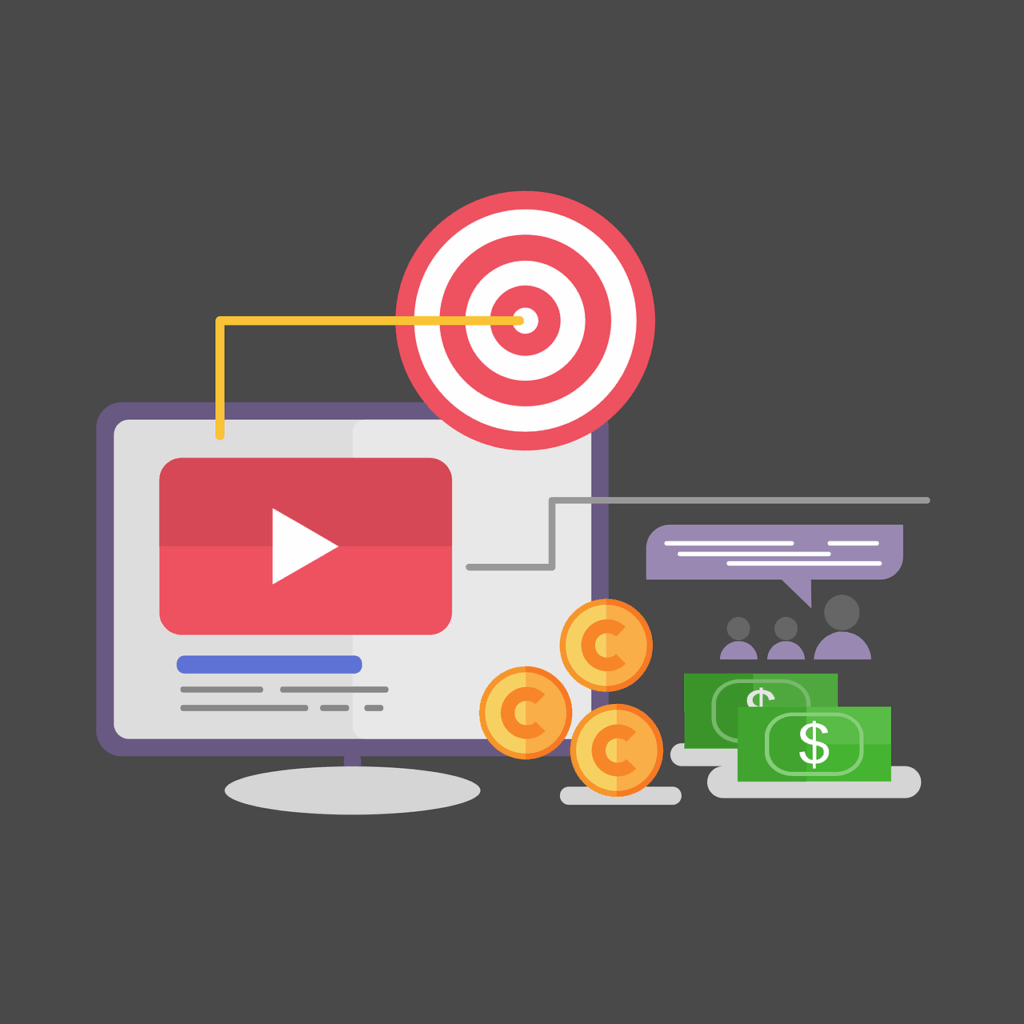Social media platforms have transformed how brands engage with audiences, but beneath the viral content and trending hashtags lies a complex engine: the algorithm. These algorithms decide what users see, when they see it, and how often — making or breaking your content’s reach.

If you’re wondering why some posts get thousands of views while others are barely noticed, it all comes down to how the algorithm works. Let’s break it down and show you how to win.
🔍 What Is a Social Media Algorithm?
A social media algorithm is a set of rules and calculations used by platforms to sort and prioritize content in a user’s feed. Instead of showing posts chronologically, algorithms aim to serve content that is most relevant, engaging, and personalized to the user.
Each platform has a unique algorithm, but they share similar goals:
- Keep users on the platform longer
- Encourage engagement (likes, shares, comments)
- Serve content that matches user behavior and preferences
📊 How Major Social Media Algorithms Work (2025)
1. Instagram Algorithm
Instagram has evolved from a simple photo-sharing app into a powerhouse platform for creators, brands, and businesses. But to truly thrive on Instagram, you need to understand the algorithm — the behind-the-scenes engine that determines who sees your content and how widely it’s shared.
Let’s dive into how the Instagram algorithm works in 2025, what factors influence it, and the best strategies to boost your visibility.

📌 What Is the Instagram Algorithm?
The Instagram algorithm is a set of ranking signals that automatically determines which content shows up in your feed, Explore page, Reels tab, Stories, and even search results.
It tailors each user’s experience based on what they engage with most. The goal? Keep users on the platform longer by showing them the most relevant and enjoyable content.
🧠 Instagram Algorithms: Not Just One
Instagram doesn’t use a single algorithm. Instead, it uses multiple algorithms tailored to different sections of the app:
- Feed & Stories Algorithm
- Reels Algorithm
- Explore Page Algorithm
- Search Algorithm
Each of these functions differently but shares core ranking factors.
🔍 How Each Algorithm Works
1. Feed & Stories Algorithm
The feed is curated from:
- Accounts you follow
- Sponsored content
- Suggested posts (based on interest)
Key ranking factors:
- Interest: Instagram predicts your interest based on past behavior (likes, comments, watch time).
- Recency: Newer posts are shown first.
- Relationship: Content from friends and accounts you engage with often is prioritized.
- Engagement: Posts with more likes, comments, shares, and saves perform better.
- Session time: If users spend more time on your post, it ranks higher.
2. Reels Algorithm
Instagram is heavily promoting short-form video content, making Reels crucial for reach and discovery.
Key ranking signals:
- Watch time: The longer users watch, the better.
- Replays: Re-watching = strong interest.
- Engagement: Likes, shares, comments, and saves.
- Content type: High-quality, vertical videos with music or original audio.
- Trend alignment: Using trending audio or effects boosts visibility.
Avoid:
- Low-resolution videos
- Recycled TikToks with watermarks
- Clickbait-style content
3. Explore Page Algorithm
The Explore tab helps users discover content outside of their following list.
Ranking factors:
- Based on your interaction history (likes, follows, saves).
- Content similar to what you’ve engaged with.
- Posts with high engagement from users with similar interests.
This is a great place to go viral and reach new audiences.
4. Search Algorithm
Search results are determined by:
- Your input keywords (e.g., “travel tips,” “healthy recipes”)
- Username, bio, and caption optimization
- Hashtags and alt text
Instagram is evolving into a search engine, so keyword optimization is crucial.
📈 How to Beat the Instagram Algorithm in 2025
✅ 1. Create Saveable, Shareable Content
- Carousels with tips or tutorials
- Relatable quotes
- Infographics and visual guides
✅ 2. Post Consistently
- Ideal: 3–5 times/week (mix of Reels, carousels, Stories)
- Use Instagram Insights to find your best posting times.
✅ 3. Maximize Reels Reach
- Keep it 15–30 seconds
- Use trending audio
- Add engaging text overlays
- Hook viewers in the first 3 seconds
✅ 4. Encourage Engagement
- Ask questions in your captions
- Use polls, quizzes, sliders in Stories
- Prompt users to “save this post” or “share with a friend”
✅ 5. Use Smart Hashtags & Keywords
- Mix niche + trending + branded hashtags
- Use relevant keywords in captions and alt text
- Research hashtags with mid-volume (10k–500k uses)
✅ 6. Leverage Stories & Highlights
- Post behind-the-scenes, testimonials, polls, updates
- Create Highlights for FAQs, reviews, products/services
✅ 7. Engage With Others
- Reply to DMs and comments quickly
- Comment on posts from your niche/industry
- Collaborate with creators and influencers
❌ Mistakes to Avoid
- Using clickbait or misleading captions
- Posting irregularly
- Ignoring DMs and comments
- Overstuffing with irrelevant hashtags
- Posting low-quality, pixelated content
🚀 Tools to Help You Work with the Algorithm
Instagram Insights – to analyze post performance
Later or Buffer – for scheduling and auto-publishing
Canva or CapCut – for designing high-performing visuals & Reels
Flick – for hashtag research
2. Facebook Algorithm
With over 2.9 billion monthly active users, Facebook remains a dominant platform for marketers, creators, and businesses. But gaining visibility in an increasingly competitive space comes down to one powerful force: the Facebook algorithm.
The days of chronological feeds are long gone. Instead, what you see on your News Feed is tailored specifically for you — thanks to sophisticated algorithms that determine what content gets prioritized, what gets buried, and what goes viral.

In this guide, we break down how the Facebook algorithm works in 2025, and more importantly, how you can beat it.
🧠 What Is the Facebook Algorithm?
The Facebook algorithm is an AI-powered system that ranks all available posts (from friends, pages, groups, and ads) and arranges them in the order most likely to keep you engaged.
It evaluates thousands of signals in real time to predict:
- What you want to see
- What will keep you scrolling
- What will spark interaction
🔍 Key Factors the Facebook Algorithm Considers
1. Who posted it?
- Content from people or pages you interact with frequently is prioritized.
- Facebook favors close connections and meaningful interactions.
2. Post type and format
- Videos, especially native videos (uploaded directly to Facebook), often perform better.
- Live videos, Reels, and visual content get higher engagement and thus more reach.
3. Engagement metrics
- Comments, shares, and reactions are weighted heavily.
- Shares and comments indicate deeper interest than likes.
4. Recency (Time decay)
- Fresh content typically gets a boost.
- Posting when your audience is active is crucial.
5. Dwell time
- If users stop scrolling and spend time reading or watching your post, it’s seen as high-value content.
6. Meaningful interactions
- Facebook tracks interactions between users, such as conversations in comments, tagging friends, or replying to DMs.
- Posts that generate conversations get more reach.
🚫 What Facebook Penalizes in 2025
- Engagement baiting (“LIKE if you love pizza!”)
- Clickbait headlines
- Sensational or misleading news
- Overly promotional posts without value
- Low-quality video content
- Spammy external links
Facebook prioritizes user experience over reach — so if your content seems manipulative or irrelevant, it will be demoted.
📈 Facebook Reels and Video: The New Reach Machines
Facebook is aggressively pushing short-form video to compete with TikTok and Instagram Reels.
Tips to win with video:
- Grab attention in the first 3 seconds
- Add subtitles (85% of users watch without sound)
- Keep videos under 90 seconds for Reels
- Use native tools (stickers, music, effects)
- Add a clear call-to-action (CTA)
🧰 How to Beat the Facebook Algorithm in 2025
✅ 1. Focus on Value-Driven Content
- Educate, entertain, or inspire.
- Use storytelling to build emotional connections.
- Mix formats: use images, carousels, videos, polls, and text.
✅ 2. Start Conversations
- Ask open-ended questions.
- Share opinions or hot takes.
- Encourage discussions in comments (Facebook notices this!).
✅ 3. Post When Your Audience Is Active
- Use Facebook Insights to find your peak engagement times.
- Consider experimenting with scheduling tools like Buffer or Creator Studio.
✅ 4. Leverage Facebook Groups
- Organic reach in Groups is significantly higher than Pages.
- Build niche communities around your brand or interest.
✅ 5. Go Live
- Live videos generate 6x more engagement than regular videos.
- Use Lives for Q&As, announcements, behind-the-scenes content, or tutorials.
✅ 6. Use Native Tools
- Post videos directly to Facebook instead of sharing YouTube links.
- Tag locations, use check-ins, and use Facebook’s built-in features for Reels, polls, etc.
✅ 7. Respond to Comments Quickly
- Facebook rewards posts with active, ongoing engagement.
- Replies and threads show the algorithm that your content is creating conversation.
📊 Pro Tips from Marketers
- Use a consistent posting schedule: aim for 3–5 times per week
- Boost high-performing organic posts (with paid ads) to reach new audiences
- Test multiple post types and analyze what works best (video vs image vs carousel)
- Use Facebook Business Suite to monitor metrics and schedule strategically
🎯 Metrics to Track
- Reach: How many people saw your post
- Engagement rate: Reactions, comments, shares
- Video watch time: Especially important for video content
- Click-through rate (CTR): Great for posts with links
- Page followers growth: Shows if your content is converting
3. TikTok Algorithm
TikTok has taken the world by storm — from dance challenges and memes to educational content and brand storytelling. But behind every viral video is a powerful recommendation system: the TikTok algorithm.
Whether you’re a creator, brand, or marketer, understanding how the algorithm works in 2025 is crucial to gaining visibility, engagement, and consistent growth on the platform.
📌 What Is the TikTok Algorithm?
The TikTok algorithm is a machine-learning system that determines what content is shown to each user on their For You Page (FYP) — the personalized home feed where viral videos are discovered.
Unlike Instagram or Facebook, TikTok prioritizes content quality over follower count. This means anyone can go viral — if they create the right content for the right audience.
🎯 Goals of the TikTok Algorithm
- Keep users watching longer
- Serve content that fits user interests
- Encourage interactions like comments, shares, and follows
- Help new creators grow by testing content with a small sample of viewers
🧠 How the TikTok Algorithm Works in 2025
TikTok uses several ranking signals to evaluate your content. Here’s what matters most:
1. User Interactions
- Videos liked, shared, commented on
- Accounts followed
- Content watched to completion (or rewatched)
- Content skipped or marked “Not Interested”
2. Video Information
- Captions and hashtags (keywords matter!)
- Sounds used (trending audio gets boosted)
- Effects and filters
- Category tags added by the creator
3. Device & Account Settings
- Language preferences
- Country or region
- Device type (for compatibility reasons)
These factors personalize your FYP, but TikTok prioritizes behavioral signals over static settings.
🚀 Key Algorithm Boosters for Viral Content
✅ 1. Watch Time
- The most powerful signal.
- Videos that are watched till the end or rewatched get pushed to more people.
✅ 2. Engagement
- Comments, likes, and shares help but comments hold more weight.
- Videos that spark discussion perform better.
✅ 3. Video Completion Rate
- Aim for short, high-retention videos (15–30 seconds).
- Hook viewers in the first 3 seconds to prevent scrolling away.
✅ 4. Use of Trending Sounds and Hashtags
- Hop on viral trends while adding your unique twist.
- Use relevant hashtags like #fyp, #foryou, or niche-specific tags.
✅ 5. Consistency
- Posting 3–5 times per week helps the algorithm understand your niche.
- Consistent posting builds audience trust and improves discoverability.
📈 TikTok’s Content Distribution Model (The “Test & Boost” Method)
- TikTok shows your video to a small test group.
- If it performs well (good watch time and engagement), it’s shown to a larger group.
- This cycle repeats, allowing content to go viral days or weeks after publishing.
This is why some TikToks blow up overnight, while others gain traction slowly.
🛠️ Tips to Win the TikTok Algorithm in 2025
🔹 Use a Hook in the First 2 Seconds
- Ask a bold question: “Did you know this TikTok hack?”
- Show an eye-catching scene or result.
- Use on-screen text to grab attention instantly.
🔹 Create Loopable Videos
- Structure your video so it ends where it began — this encourages replays.
- Add a call to action like “Watch till the end 👀” or “Wait for it…”
🔹 Tell a Story or Provide Value
- Educational, motivational, or story-driven videos perform very well.
- Even short videos can deliver a punchy message or tutorial.
🔹 Add Captions and On-Screen Text
- Increases watch time.
- Makes your video accessible even with sound off.
🔹 Engage With Comments
- Reply to comments with a video response.
- Pin the best or funniest comments.
- The more comments a video gets, the more it gets shown.
❌ What Hurts Your Reach on TikTok
- Deleted videos: Signals low-quality content.
- Low retention: If most viewers drop off in the first few seconds.
- Reused content: Watermarked or recycled videos from other platforms.
- Violating guidelines: TikTok is strict about community violations.
🔄 TikTok SEO: The Rising Trend in 2025
TikTok is increasingly being used as a search engine, especially by Gen Z.
How to optimize for TikTok SEO:
- Use keywords in captions and on-screen text.
- Add hashtags based on what users search for (e.g., #budgettravel, #fitnessroutine).
- Say your keywords out loud in your video (TikTok’s AI listens!).

📊 Best Types of Content for Growth
- Quick tutorials (life hacks, productivity tips, beauty routines)
- Behind-the-scenes (work, travel, content creation)
- “Did you know?” facts and mini-educations
- Challenges and trend participation
- Personal stories (relatable, vulnerable, or funny)
4. LinkedIn Algorithm
In 2025, LinkedIn isn’t just a platform for job seekers — it’s a powerful engine for networking, content marketing, and thought leadership. But to thrive on LinkedIn, you must understand its gatekeeper: the LinkedIn algorithm.
If your posts are getting low views despite quality content, the algorithm might be the missing piece. In this guide, we’ll break down how the LinkedIn algorithm works, what factors influence reach, and the best practices to make your content thrive.

🧠 What Is the LinkedIn Algorithm?
The LinkedIn algorithm is a system designed to curate, filter, and prioritize the content that appears in each user’s feed. Its goal is to foster professional engagement by showing users the most relevant, meaningful content — based on their interests, behavior, and connections.
🎯 Primary Objectives of LinkedIn’s Algorithm
- Promote authentic and relevant conversations
- Encourage engagement among professional networks
- Boost creator visibility for value-driven content
- Minimize spam, clickbait, and irrelevant posts
🔍 How the LinkedIn Algorithm Works (2025 Breakdown)
LinkedIn’s algorithm follows a 4-step process to determine whether your post gets wide distribution or disappears in the feed.
1. Initial Filter (Spam Detection)
- The algorithm immediately screens your post for spam or policy violations.
- Avoid:
- Overuse of hashtags
- Excessive links
- Clickbait language
- Fake engagement prompts (“Comment YES if you agree!”)
2. Initial Test Run
- Your post is shown to a small percentage of your network.
- LinkedIn measures early engagement (likes, comments, dwell time).
- If engagement is strong, the algorithm sends it to more users.
3. Content Scoring & Ranking
- Posts are ranked using engagement metrics:
- Dwell time (how long users spend reading your post)
- Comments (especially meaningful, long-form ones)
- Reactions (👍❤️👏 etc.)
- Shares
- Posts with more thoughtful interactions are prioritized.
4. Human Moderation (Optional for Viral Posts)
- Extremely viral or borderline content may be manually reviewed before going broader.
💡 Key Ranking Signals on LinkedIn
✅ Dwell Time
- One of the strongest signals.
- If users pause and read, LinkedIn assumes your content is valuable.
- Focus on readable formatting, strong intros, and clear structure.
✅ Relevance to Audience
- Based on industry, job title, skills, or mutual connections.
- LinkedIn pushes content to users similar to your profile or audience.
✅ Engagement Type
- Comments and shares outweigh likes.
- Posts that spark discussions (not just reactions) are rewarded.
✅ Connection Strength
- Content from 1st-degree connections ranks highest.
- Content from 2nd- and 3rd-degree connections can still surface if engagement is high.
📈 How to Win with the LinkedIn Algorithm in 2025
🔹 1. Hook with a Strong First Line
- The first 2 lines are crucial — they determine whether users will click “See more.”
- Use storytelling, curiosity, or thought-provoking statements.
🔹 2. Post Native Content
- Avoid external links in the main post (LinkedIn deprioritizes posts that send users off-platform).
- Place links in the comments instead.
🔹 3. Use LinkedIn-Friendly Formats
- Text posts still perform extremely well.
- Carousels (PDFs) are a top-performing format in 2025.
- Native video works well if short and insightful.
- Polls and newsletters are also boosted by the algorithm.
🔹 4. Engage in the First Hour
- Respond to comments quickly — the first 60 minutes are crucial for boosting reach.
- Start conversations with your audience by asking for their input.
🔹 5. Use 3–5 Relevant Hashtags
- Avoid generic tags like #success or #motivation.
- Use niche hashtags like #ProductDesign, #B2BMarketing, #AIInHR, etc.
🔹 6. Be Consistent
- Posting 2–4 times per week helps train the algorithm to favor your content.
- Avoid spamming daily; quality matters more than frequency.
🔹 7. Tag People (Sparingly)
- Tagging relevant individuals can increase visibility — but only if they engage.
- Do not tag people just for reach.
❌ What the LinkedIn Algorithm Penalizes
- Outbound links in the post body
- Clickbait headlines
- Hashtag stuffing or irrelevant tags
- Low engagement rates
- Inactive or ghost accounts tagging
- Posting too frequently (daily) with low interaction
🧰 Tools & Features to Leverage
- LinkedIn Creator Mode: Enables access to features like newsletters, analytics, and profile call-to-action buttons.
- Newsletters: Great for niche authority-building.
- Carousels: Excellent for step-by-step guides, stats, or story-based posts.
- LinkedIn Live: For events, AMAs, and product demos.
📊 Metrics That Matter
- Impressions: Total times your content was shown
- Engagement rate: Comments, shares, and reactions per impression
- Dwell time: Average time people spend on your posts
- Follower growth: A sign your content is resonating
5. YouTube Algorithm
YouTube is the world’s second-largest search engine and a go-to platform for entertainment, education, and everything in between. But behind every video that goes viral or builds a loyal audience lies one powerful engine: the YouTube algorithm.
If you’re a content creator, marketer, or brand using YouTube to grow your audience, understanding how this algorithm works is crucial for visibility and success.

🎯 What Is the YouTube Algorithm?
The YouTube algorithm is a complex recommendation system that determines which videos show up in:
- Users’ Home feeds
- The Suggested Videos section
- Search results
- Subscriptions feed
- YouTube Shorts feed
Its goal? To keep viewers on the platform longer by showing them relevant, high-quality, and engaging content.
🧠 How the YouTube Algorithm Works (2025 Breakdown)
YouTube’s recommendation system has two main goals:
- Match viewers with videos they’ll enjoy
- Maximize viewer satisfaction and time on site
The algorithm consists of multiple interconnected systems:
1. Home Feed Recommendations
- Personalized video suggestions based on:
- Watch history
- Channel subscriptions
- Engagement (likes, comments, shares)
- Video topics and format preferences
2. Suggested Videos
- Appears on the sidebar or after a video ends.
- Prioritizes videos that:
- Are similar to what was just watched
- Have high watch time and engagement
- Are from creators the viewer has interacted with
3. Search Results
- Influenced by:
- Video title, description, and tags
- Relevance to the search term
- Audience retention and click-through rate (CTR)
4. YouTube Shorts Feed
- Powered by a separate algorithm.
- Focuses heavily on swipe-through behavior, watch duration, and completion rate.
- Short, catchy, looping content tends to perform best.
🔍 Key Ranking Factors in the YouTube Algorithm
✅ 1. Click-Through Rate (CTR)
- The % of users who clicked your video after seeing the thumbnail.
- Boost CTR with:
- Eye-catching, curiosity-driven thumbnails
- Titles that are emotional, specific, or question-based
✅ 2. Watch Time
- Total amount of time people spend watching your video.
- Longer watch time = better recommendation potential.
✅ 3. Average View Duration (AVD)
- How long, on average, a viewer watches your video.
- Keep this high by:
- Hooking viewers in the first 15 seconds
- Using storytelling or tutorial structures
- Avoiding long intros or irrelevant tangents
✅ 4. Engagement Signals
- Likes, comments, shares, and subscribes all signal value.
- Encourage viewers to interact by asking questions or including a CTA.
✅ 5. Consistency & Freshness
- Regular posting tells the algorithm your channel is active.
- New videos are tested with small audiences, then boosted if they perform well.
✅ 6. Video Metadata
- Keywords in the title, description, tags, and closed captions help with discoverability (especially in search).
- Make sure metadata aligns with what your audience is searching for.
📱 How the Shorts Algorithm Works (2025)
YouTube Shorts (vertical videos under 60 seconds) have their own recommendation engine, which focuses on:
- Looping potential
- Fast-paced editing
- Catchy visuals or hooks in the first 1–3 seconds
- High completion rates and replays
Tip: Shorts can explode even if your long-form videos don’t perform well — and they often bring in massive subscriber growth.
💡 Tips to Win the YouTube Algorithm in 2025
🔹 1. Optimize Titles & Thumbnails
- Think like a viewer. What would you click?
- Use curiosity gaps, numbers, or power words.
🔹 2. Master the First 15 Seconds
- Avoid long intros — get straight to the point or show a quick preview of the value to come.
🔹 3. Create Playlists
- Increases session watch time.
- Helps organize content and keeps viewers engaged on your channel.
🔹 4. Use End Screens & Cards
- Promote binge-watching by linking related videos.
- Keep users within your content ecosystem.
🔹 5. Engage With Comments
- The more people comment, the more YouTube sees your video as a discussion starter.
- Pin a comment or ask a question to drive responses.
🔹 6. Upload Consistently
- You don’t need daily videos, but aim for a predictable schedule (1–2x per week is ideal for growth).
🚫 What Hurts Your Reach
- Misleading thumbnails or titles (clickbait leads to poor watch time)
- Reusing someone else’s content without transformation (demonetization risk)
- Dead channels (inactivity makes it harder to get shown)
- High bounce rates (people clicking away early)
📊 How to Track Your Algorithm Performance
Use YouTube Analytics to measure:
- Impressions and click-through rate
- Watch time and audience retention
- Traffic sources (search, suggested, home, Shorts)
- Engagement rates (likes, comments, shares)
Regularly review your top-performing videos to see what’s working — and do more of that.

🎯 How to Win Against the Algorithm
Beating the algorithm isn’t about hacking it — it’s about understanding and aligning with its purpose. Here’s how:
1. Create High-Quality, Relevant Content
- Use crisp visuals, strong hooks, and mobile-friendly formats
- Speak to your audience’s pain points and desires
- Stay authentic and avoid generic templates
2. Engage Immediately and Often
- Respond to comments quickly (especially in the first hour)
- Ask questions to spark meaningful interactions
- Use polls, quizzes, and Q&As on Stories
3. Use Platform-Specific Features
- Instagram: Use Reels, carousels, and polls
- TikTok: Jump on trending sounds and effects
- LinkedIn: Try document carousels and native videos
- YouTube: Use Shorts and pinned comments
4. Consistency Over Virality
- Post consistently — 3–5 times a week is ideal
- Build trust and familiarity with your audience
- Use a content calendar to plan for trends and launches
5. Optimize for SEO
- Use searchable keywords in captions, titles, and hashtags
- Add alt text to Instagram images
- YouTube: Use strong titles, descriptions, and tags
6. Leverage Analytics
- Study performance metrics to identify what works
- Double down on successful content formats
- Test new content types (carousel, live, stories, short video)
🚫 What to Avoid
- Engagement baiting (“Tag 3 friends!”)
- Low-quality images/videos
- Inconsistent posting
- Ignoring comments and DMs
- Overusing irrelevant hashtags
✅ Final Thoughts
Social media algorithms are not your enemy — they’re your guide. Once you understand what the platform wants (engaged, satisfied users), your job becomes simple: create content that connects, sparks conversation, and provides real value.
Keep learning, stay creative, and adapt — because that’s how you win in the ever-evolving world of digital marketing.
